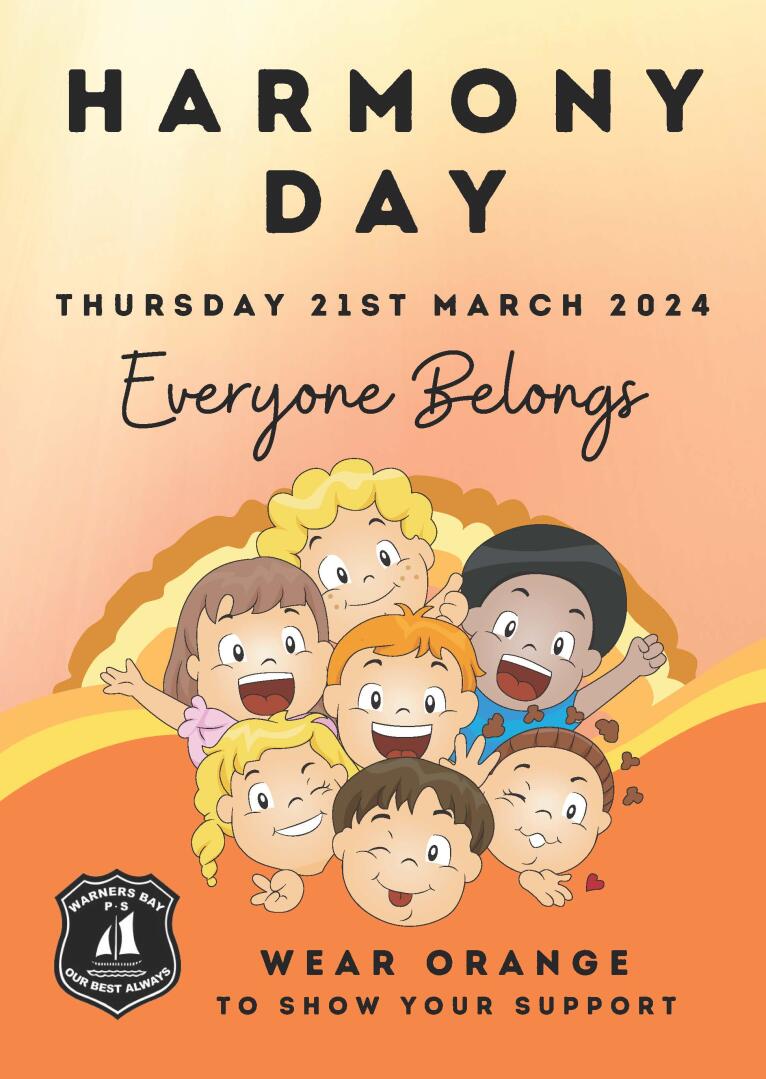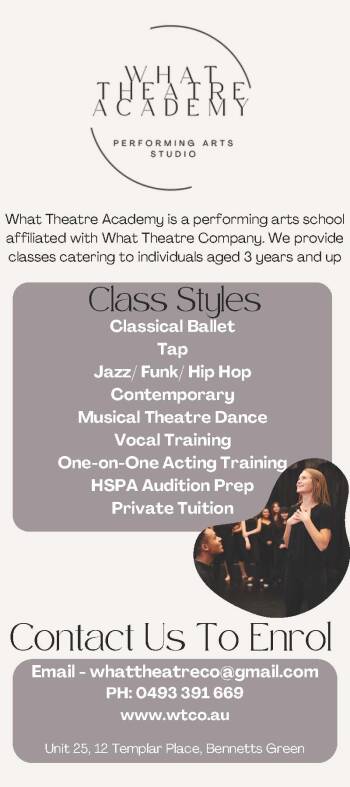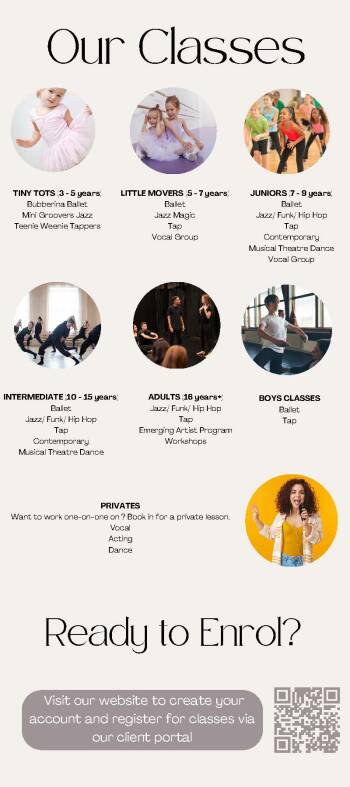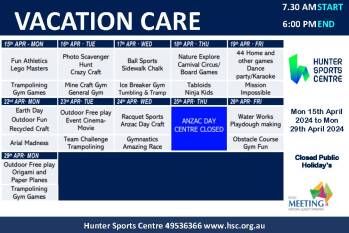Student Success:
We have had wonderful student success for the beginning of this year. Harper and Archie both made the ELM basketball team. We had 16 swimmers compete at the zone swimming competition with Liam competing at the regional finals. Liam has now been successful at making the Hunter team to compete at the State Championships next month! Preston is off to trial for the regional league team, Ava is representing in diving and Charlotte in tennis and cricket, Eddie for cricket, Layken for AFL. Wow! What great sports we have at Warners Bay!
Upcoming Events:
We have lots of events planned for the rest of term including the Easter Hat Parade, our cross country carnival for 8 year olds and over and the Year 6 mini fete.
Harmony Day:
We will be celebrating Harmony Day this Thursday. Students are encouraged to wear a dash of orange.
Our first whole school assembly will be held next Tuesday at 2.00pm in the school hall. Parents are welcome to attend.
NAPLAN:
Students in Year 3 and 5 are sitting the NAPLAN assessments over the next two weeks. The results for the assessments will return to our school and parents in Term 2.
Principal’s Reading Challenge Launch Week:
This week we are launching our Principal’s Reading Challenge! Keep an eye out on our Facebook page for some information. We would like all student to engage in the reading challenge this year!
Cross Country:
Our cross country carnival will be held on Thursday 4 April 9.30am – 11.10am for 8 year old – 12 year old students. Parents are invited to come along to assist on the course as course marshals or to watch from the designated viewing areas. Please sign in at the office on arrival.
Distance to run:
8 and 9 year old category – 2 laps (2 km) Please note: 8 and 9 year old students compete together.
10 year old category – 2 laps (2 km)
11 year old category – 3 laps (3km)
12 and 13 year old category – 3 laps (3km) Please note: 12 and 13 year old students compete together.
External Validation:
Next term, our school will undergo External Validation (EV). This process is where we assess and determine how well we are going in 14 areas across Learning, Teaching and Leading. We have a team of teachers who are currently putting together our evidence package for the EV panel to assess. After EV is complete, we will begin to write our new school plan. There will be consultation with pour community about what needs to be in our school plan for 2025 – 2028.
Attendance:
We are continuing to focus on attendance in our school. Particularly on unexplained and unjustified absences including having the day off for a child’s birthday. A reminder that parents do need to bring their child to the office when a child is late to school.
New mural:
We had a new mural painted in the school holidays on the C Block verandah – it looks amazing! Carlie is currently working on a design for the hall wall and two small designs for the K – 2 COLA area.
Kiss and Ride:
Please remember to drive down to the start of the Kiss and Ride zone when picking up your child from school. It is very unsafe to wait in front of the gate when parents then have to line up behind in the No Stopping zone. Please utilise the whole Kiss and Drop zone.
Kiss and Ride parking zone rules:
The rules for a Kiss and Ride Zone are available on the Lake Macquarie Council website. I have added them here for your reference.
These zones are designed for quick entry and exit and minimise congestion and risk when used properly by all parents and carers. These zones operate under the same conditions as no parking zones, which means you may stop to drop off or pick up children for a maximum of 2 minutes. You’re required to remain in, or within 3 metres of your vehicle.















